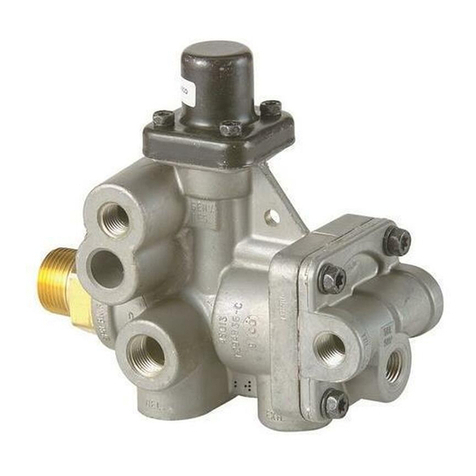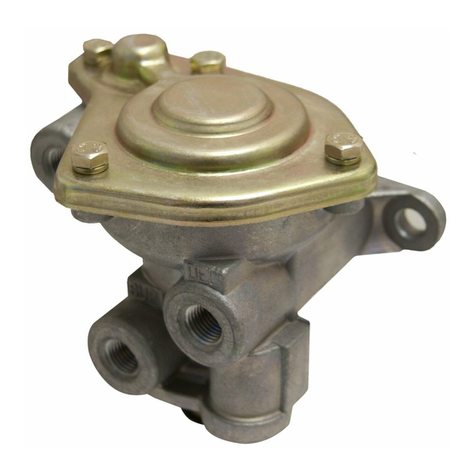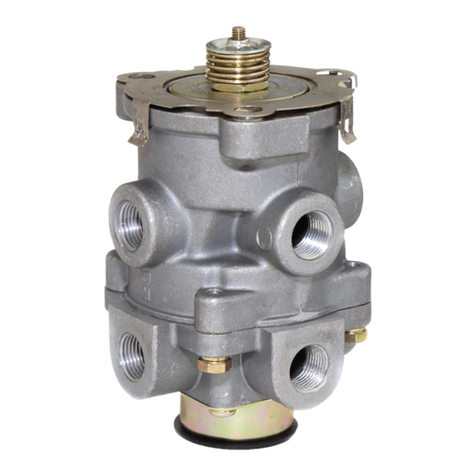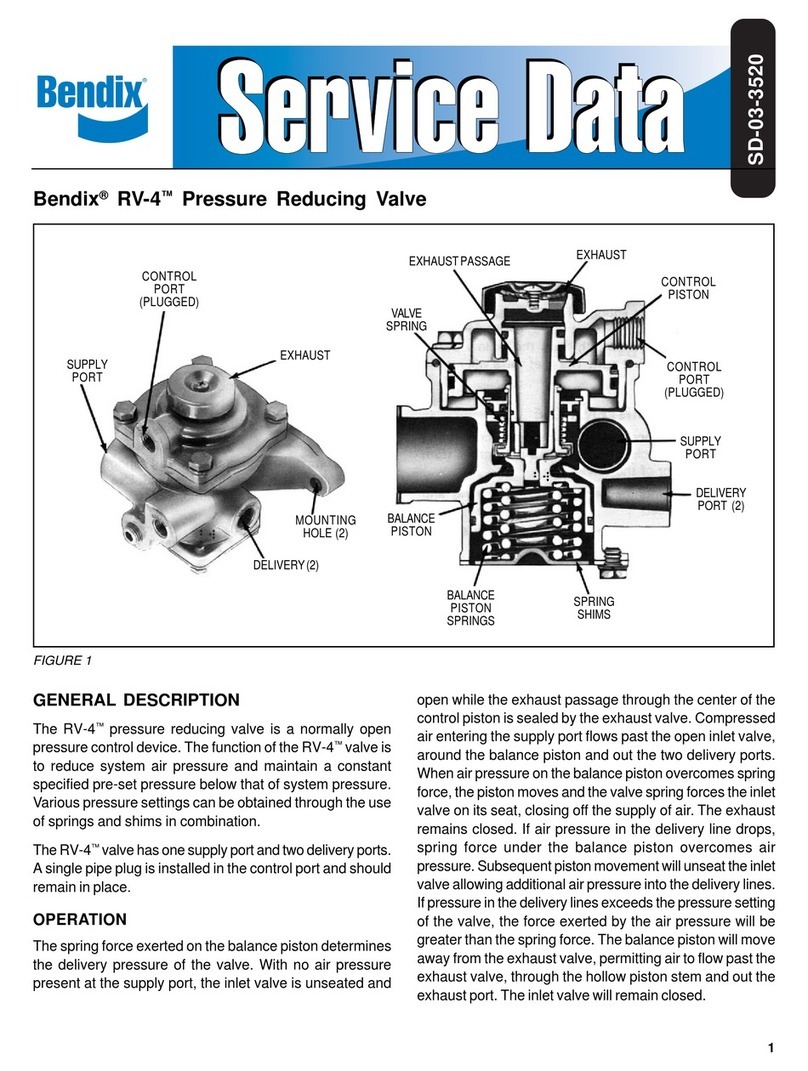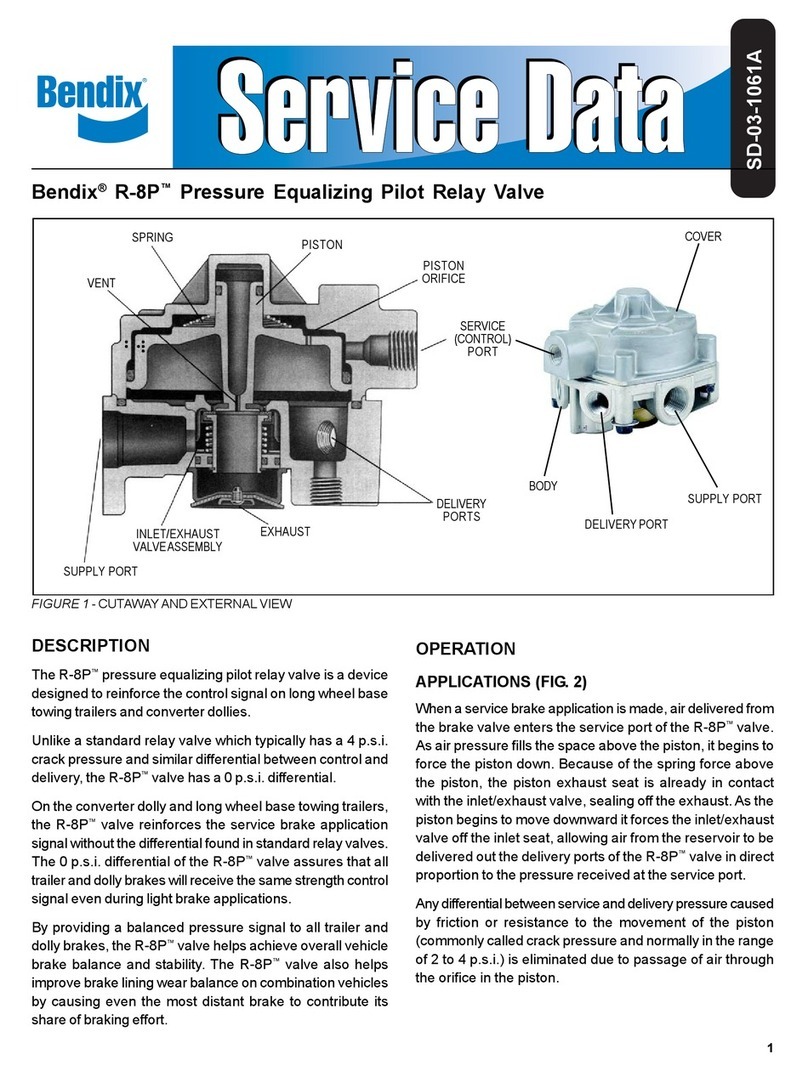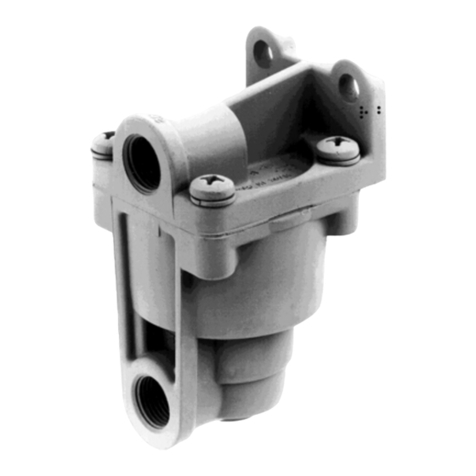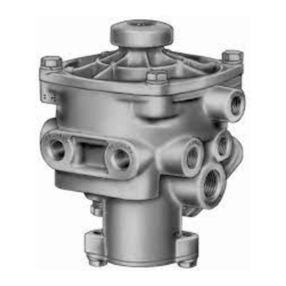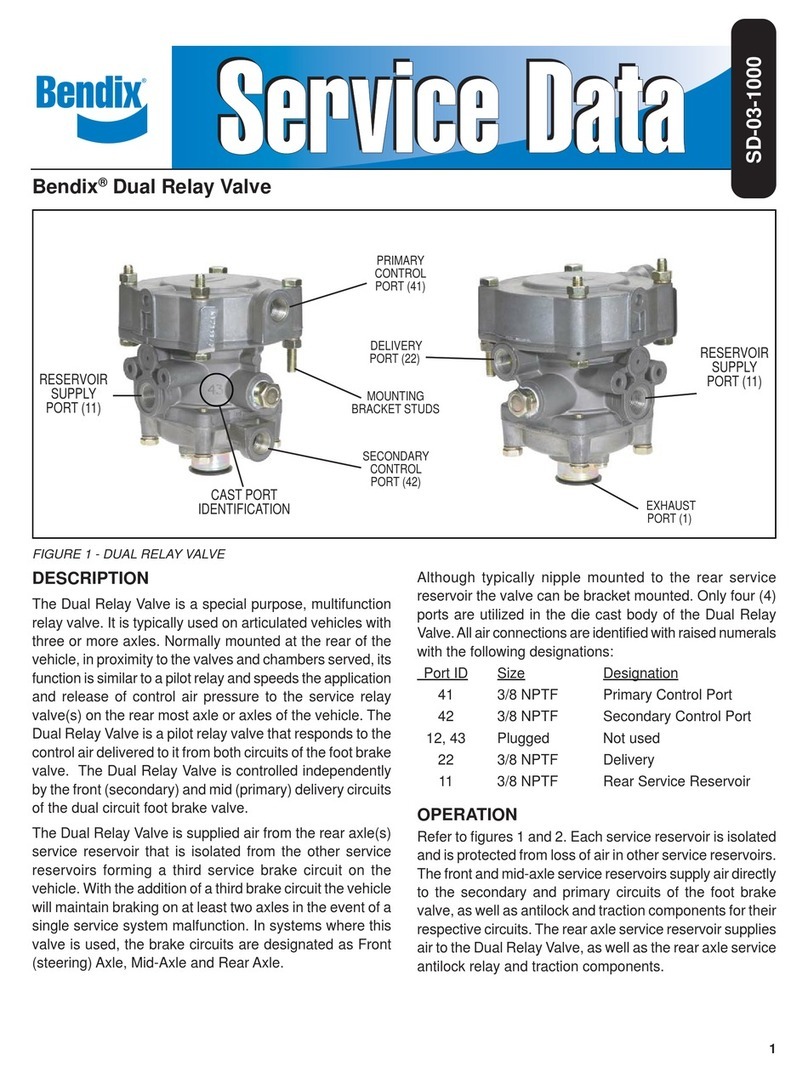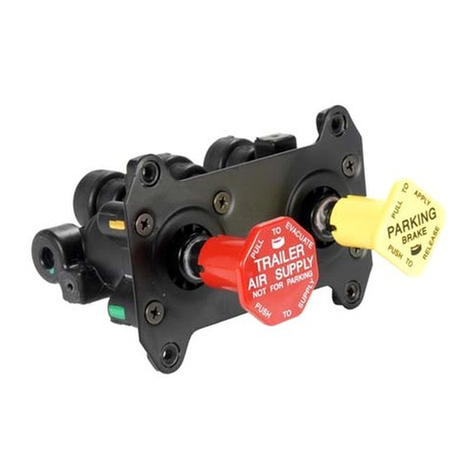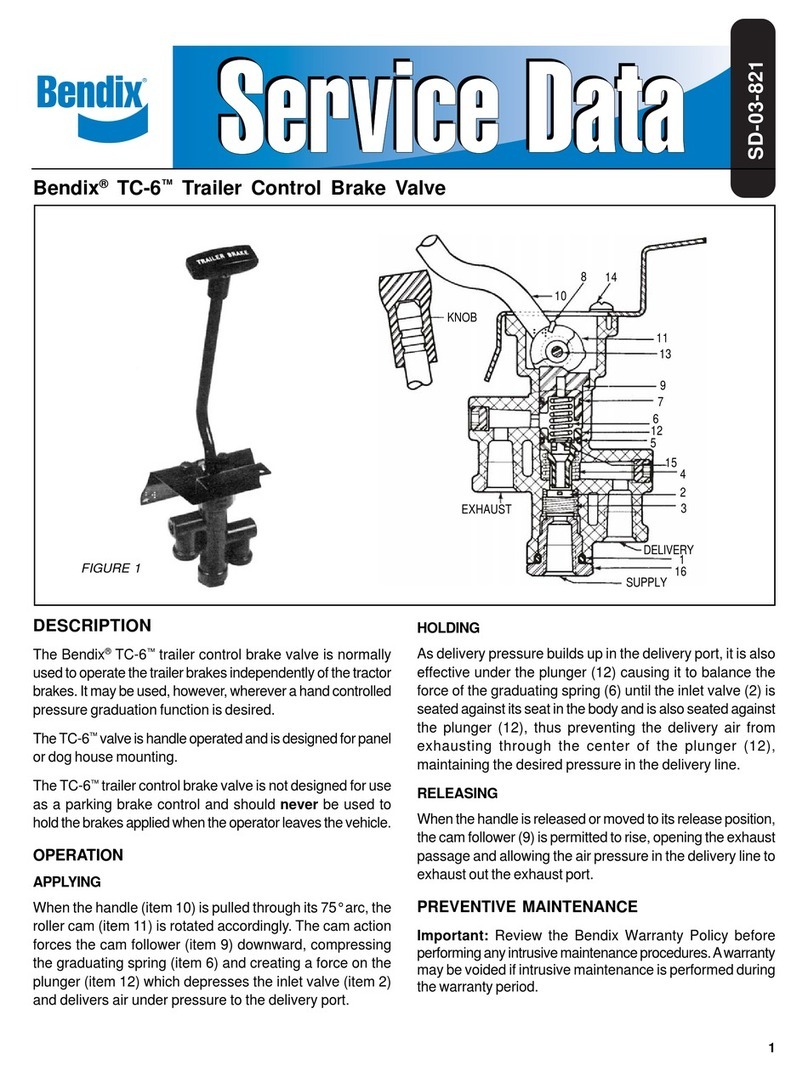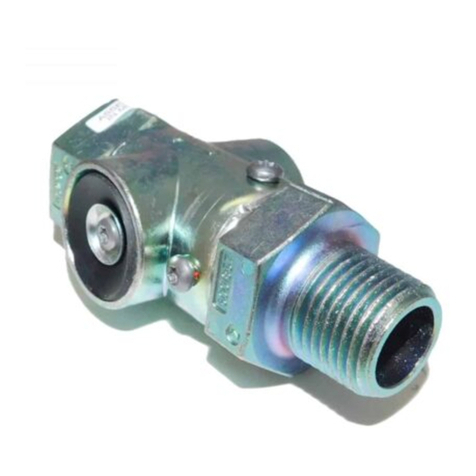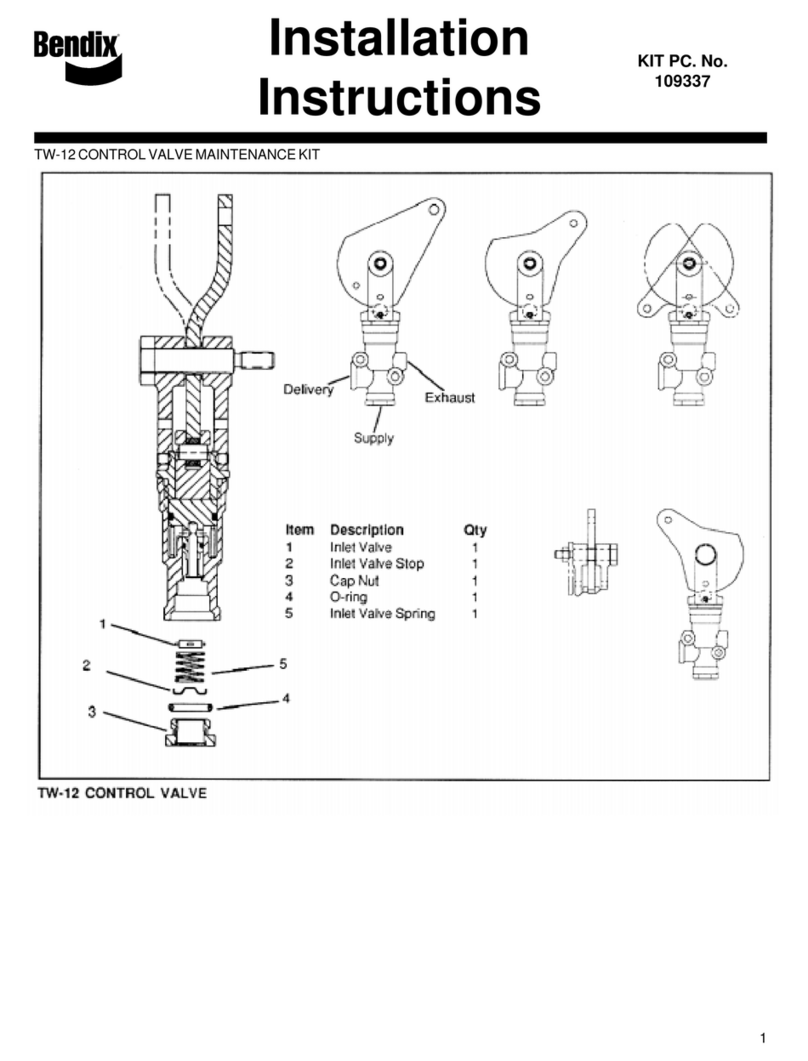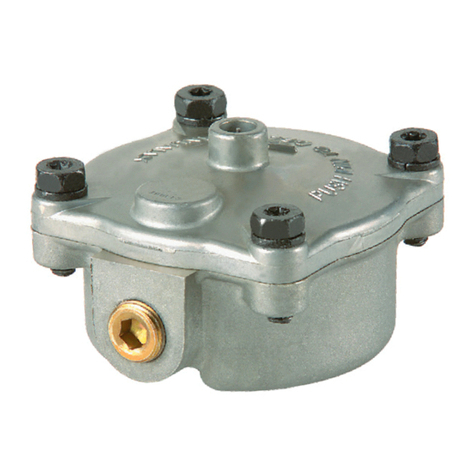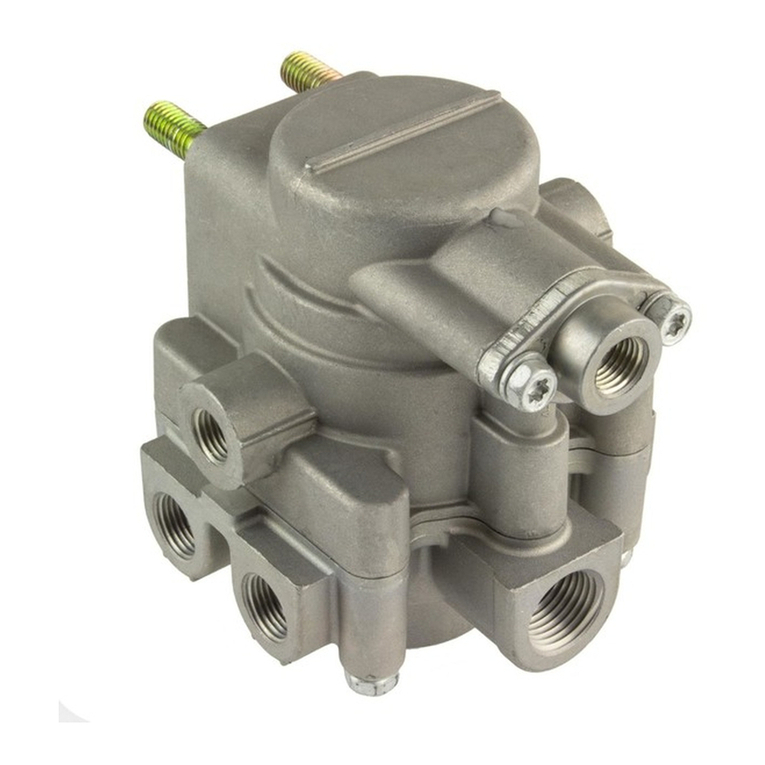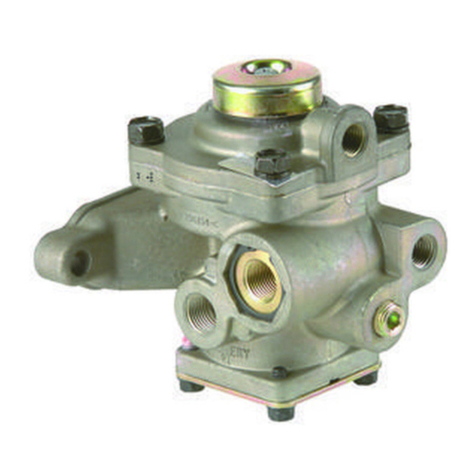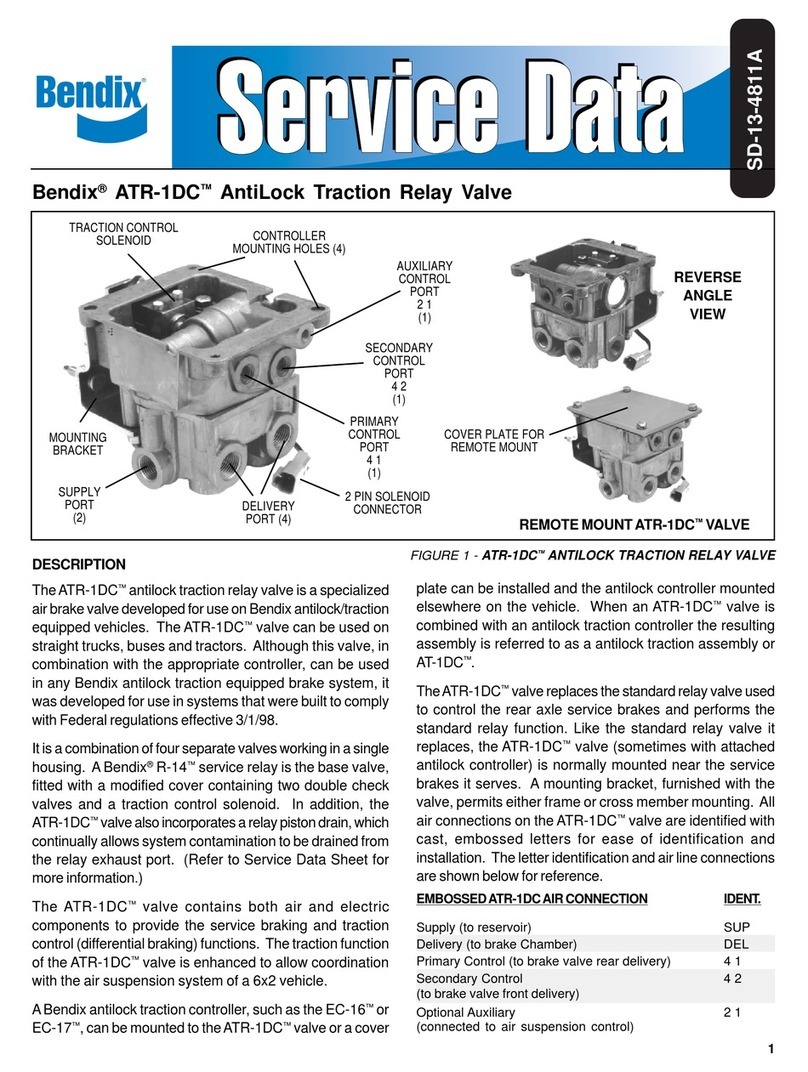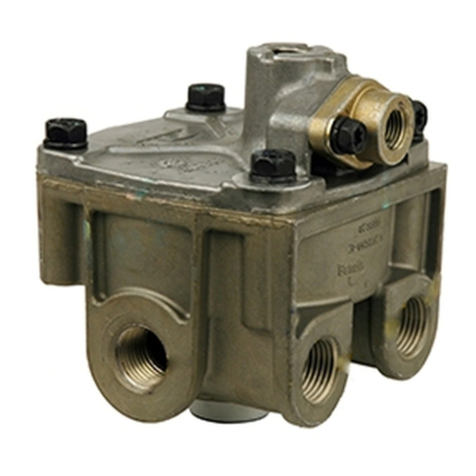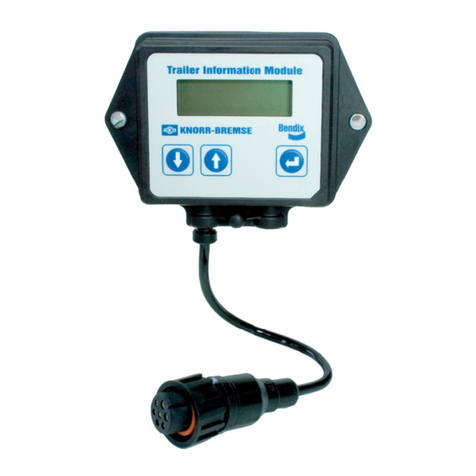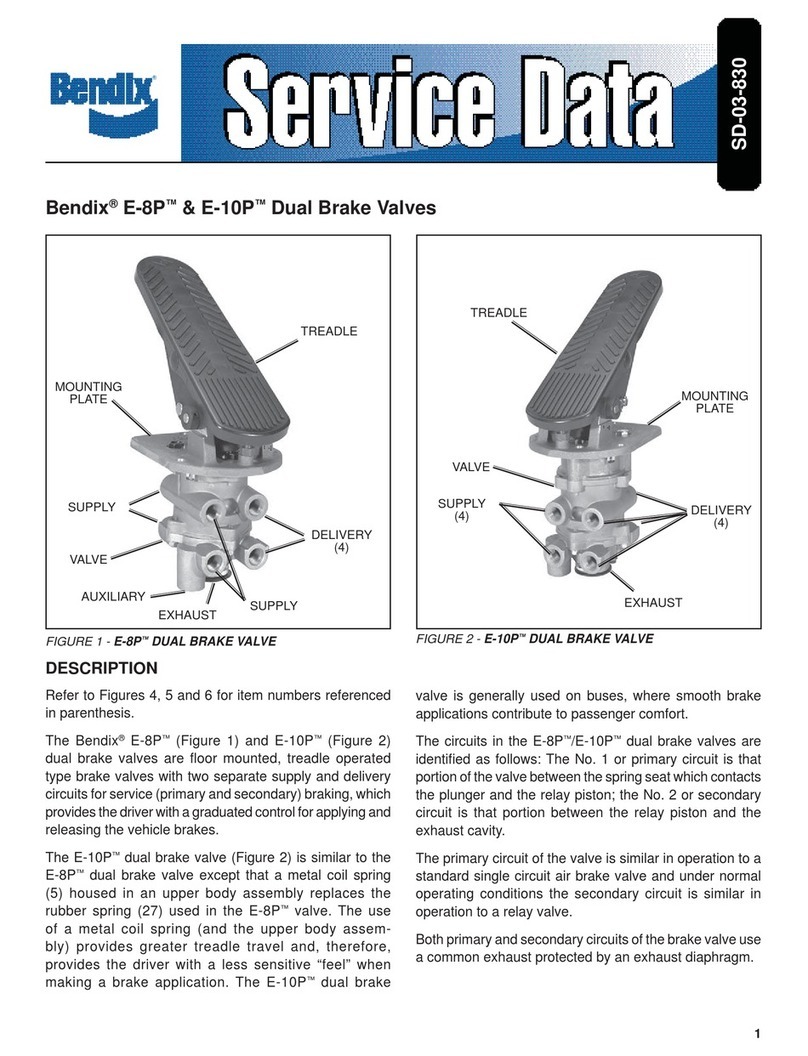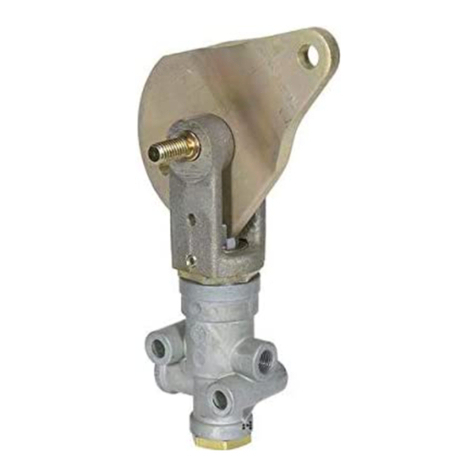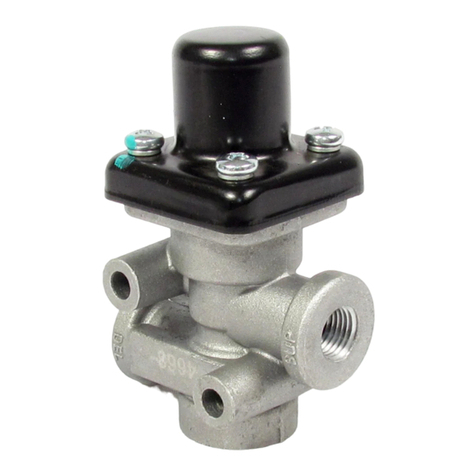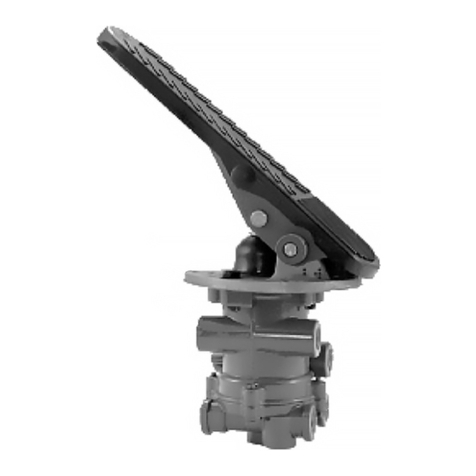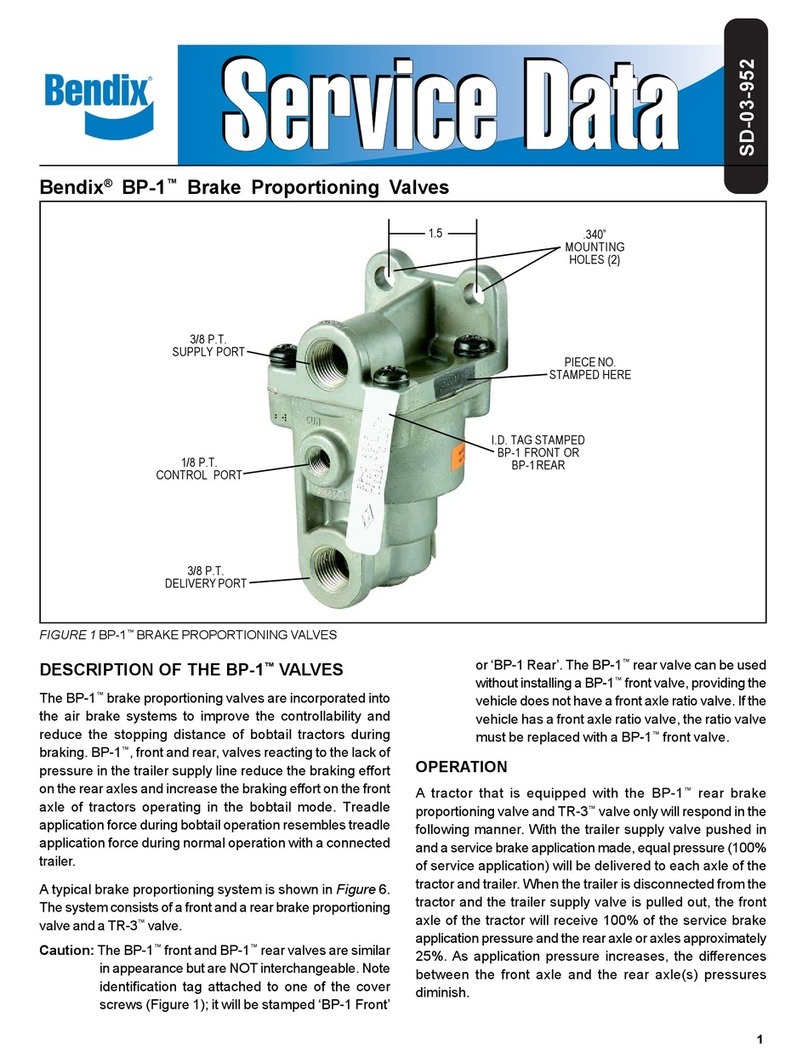
2
OPERATION
SPRING BRAKES RELEASED
Whenthespringbrakesarereleased,airfromtheparkcontrol
valveflowsthrough the QR-1C™valve, causing the double
checkvalveandquickreleasediaphragmstoflexandseal
thebalance andexhaustports.Air flowsintothe emergency
port of the spring brakes from the QR-1C™valve delivery
ports.
SPRING BRAKES APPLIED
Whenthespringbrakes areapplied, supplyline airpressure
tothevalve is exhausted through the parkcontrol valve.As
air pressure is removed from one side of the double check
valveandquickreleasediaphragms,theyflexintheopposite
directionopeningthebalanceandexhaustports.Springbrake
emergency pressure is released at the exhaust port of the
valvewhile thesmallamount ofairtrapped betweenthe two
diaphragmsisreleasedthroughtherelayvalveorbrakevalve
exhaust.
ANTI-COMPOUNDING
When a service brake application is made with the spring
brakesapplied,serviceair entersthe balanceportandflows
through the valve into the emergency ports of the spring
brakes. This prevents the compounding of a service and
spring brake application. Service air passing through the
valveflexesthedoublecheckandquickreleasediaphragms,
sealing the supply and exhaust ports. When the service
application is released, air is exhausted from the spring
brakes.
PREVENTIVE MAINTENANCE
Important: Review the Bendix Warranty Policy before
performinganyintrusivemaintenanceprocedures.Awarranty
maybe voided ifintrusivemaintenance is performedduring
thewarranty period.
No two vehicles operate under identical conditions, as a
result, maintenance intervals may vary. Experience is a
valuableguide indetermining thebestmaintenance interval
for air brake system components. At a minimum, the
QR-1C™valveshouldbeinspectedevery 12monthsor3600
operatinghours,whichever comesfirst,forproperoperation.
Should the QR-1C™valve not meet the elements of the
operationaltestsnotedinthisdocument,further investigation
andservice of thevalvemay berequired.
REMOVAL
1. Blockvehicle wheelsand/or holdvehiclebymeansother
thanairbrakes.
2. Drainallairbrakesystem reservoirs.
3. Identifyand disconnect air linesfromvalve.
4. Removemounting bolts,thenvalve.
DISASSEMBLY
Marktherelationshipofthebodyandcoverbeforedisassembly.
1. Removecap nut.
2. Removesealing ring from capnut.
3. Removedouble checkvalve diaphragm.
4. Removefour Phillips headscrews.
5. Separate the body and cover and remove the sealing
ringand quick release diaphragm.
CLEANING AND INSPECTION
Cleanall metal partsinmineral spirits.Wipeall rubber parts
clean.It isrecommendedthat allrubberparts andanyother
partshowing signsofwear ordeteriorationbe replacedwith
genuineBendixparts.
ASSEMBLY
1. Install sealing ring on cap nut.
2. Installdouble check valvediaphragmin body.
3. Installcap nut and torque to 150-400 inch pounds.
4. Installsealing ring invalvebody.
5. Installthe quick release diaphragm in the cover.
6. Install the cover and diaphragm on body, aligning the
marksmade duringdisassembly.Securetogetherusing
the four Phillips head screws and torque to 30-60 inch
pounds.
7. Re-installtheQR-1C™valveandbeforeputtingthevehicle
inservice, perform the “Operation andLeakageTests.”
OPERATING AND LEAKAGE TESTS
Before performing these tests, park the vehicle on a level
surfaceandholdthevehiclebymeansotherthanthebrakes.
1. Withthe parkcontrolvalve inthereleased position,note
thatthespringbrakesarereleased.
2. Remove the air line connected to the QR-1C™valve
balance port and apply a soap solution to the exhaust
andbalanceport.A1"bubblein5secondsispermissible
at either location.
3. Reconnect the QR-1C™valve balance line; and using
theparkcontrolvalve,parkthe vehicle.NOTE:Aprompt
applicationof the springbrakeswithan exhaust ofairat
theQR-1C™valve exhaustport.
4. Remove the air line connected to the supply port of the
QR-1C™valve. With a service brake application hold
applied, apply a soap solution to the supply port and
aroundtheseambetweenthebodyandcover.A1"bubble
in 5 seconds is permissible at the supply port. No
leakageispermitted between the body and cover.
5. Reconnect the supply port air line. If the valve does not
function as described, or if leakage is excessive, it is
recommended that it be replaced with a new or
remanufacturedunit,orrepairedwithgenuineBendixparts.
